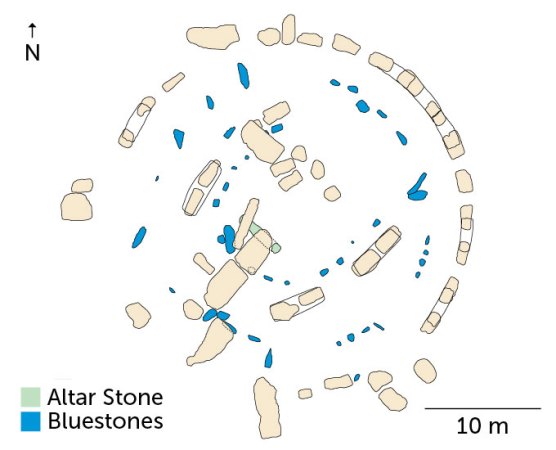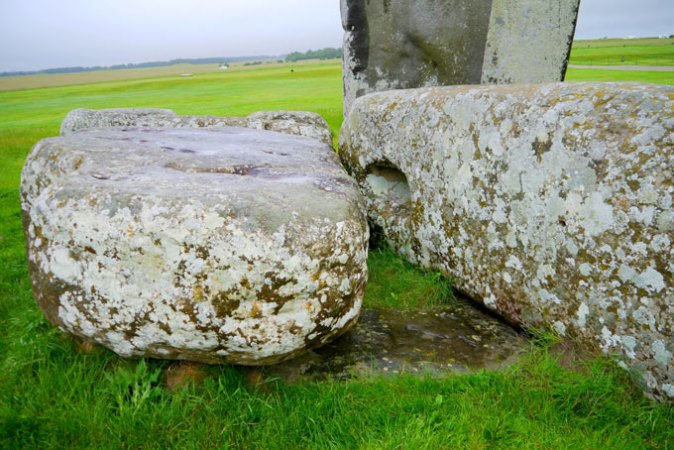Extreme Climate Survey
Scientific news is collecting questions from readers about how to navigate our planet’s changing climate.
What do you want to know about extreme heat and how it can lead to extreme weather events?
The sandstone slab sits within a semicircular arch of smaller stones, known as bluestones. Most of the bluestones have been chemically traced to a rock source in west Wales, about 225 kilometers west of Stonehenge. A Welsh stone circle more than 5,000 years old may have provided the initial building blocks for Stonehenge (SN: 2/11/21).
The new study challenges an earlier assumption that the Altar Stone, due to its position near the bluestone arch, also had Welsh roots.
A combination of the estimated ages for the three minerals in the Altar Stone – which ranged from a few hundred million to 3 billion years – provided a gauge for identifying the existing source rock that represented the most likely source for the Stonehenge stone. The decay of small amounts of radioactive elements in crystallized minerals – such as the decay of uranium into lead in zircon crystals – occurs at known rates, which enabled Clarke’s team to calculate age estimates.
Moving a massive stone at Stonehenge
Transporting the six-metre Altarstone from Scotland to Salisbury Plain in southern England would have presented a formidable challenge.
The Altar Stone’s transport may have depended on the exact location it came from, which has yet to be determined, geochemist Nick Pearce of Aberystwyth University in Wales said at a press conference on August 13. The Orcadian Basin stretches from northeast Scotland to the Orkney Islands off the north coast of Scotland. Shipping to the east coast of England before transporting the Altar Stone about 100 miles to Stonehenge from the English Channel, rather than a strictly land route, makes more sense if the Altar Stone comes from an island, Pearce said.
Scholars do not know when the Altar Stone arrived at Stonehenge. Construction began about 5000 years ago (SN: 29.5.08). Originally serving as a cemetery, changes and additions to the site occurred over the next two millennia.
The sandstone slab may have been placed between the bluestones during a second construction phase between 2620 BC and 2150 BC, the researchers suspect.

A Scottish source for the Altar Stone adds to the growing evidence of long-distance links, including shared pottery styles and house plans, between late Neolithic groups inhabiting the British Isles during the Stonehenge building phases , says archaeologist Alasdair Whittle of Cardiff University in Wales. . Diet-related chemical signatures in excavated bones have suggested that some Late Neolithic domestic animals in southern England came from the north, perhaps from Scotland, says Whittle, who was not involved in the new study.
“This was an age of heroic feats of joint labour, movement and assembly, into which an Altar Stone from north-east Scotland would fit in very well,” says Whittle.
The mystery of the orientation of the Stonehenge Altar Stone
A Scottish origin for the Altar Stone also points to an intriguing architectural connection, says archaeologist Joshua Pollard of the University of Southampton in England. Unlike the other stones at Stonehenge, the Altar Stone lies on its side – a detail seen on some stone circles in Scotland.
Two tumbled stones from the outer circle of the monument rest on the Altar Stone, which has been broken in two and sunk mostly into the grass. In contrast to the distant origins of the Altar Stone, those massive stones of the outer circle came from a rock source located 25 kilometers north of Stonehenge.

Scholars do not know whether the Altar Stone originally stood upright.
A region of Scotland called Aberdeenshire contains up to 99 recorded examples of extended stone circles. In each case, a ring of standing stones surrounds a slab placed laterally on the south-west or south arch of the ring.
Aberdeenshire’s Recumbent Stone Circles represent “a very interesting architectural connection [to the Altar Stone],” says Pollard, who was not part of Clarke’s team.
#mysterious #Stonehenge #Altar #Stone #roots #Scotland
Image Source : www.sciencenews.org